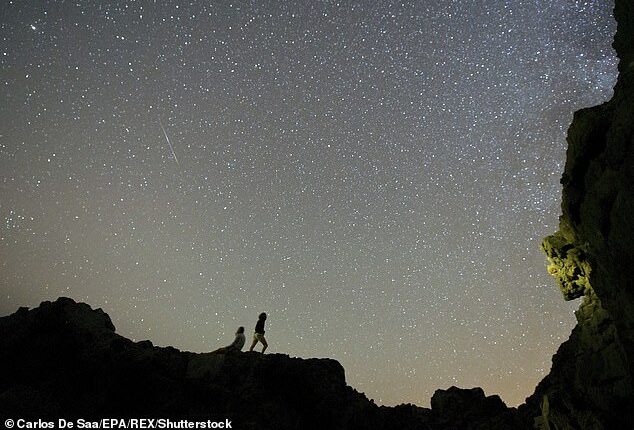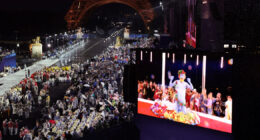Stargazers will be treated to a meteor shower tomorrow as the Delta Aquariids light up the night sky.
The display is expected to peak in the early hours of Tuesday with up to 25 shooting stars an hour streaking across the sky.
The Delta Aquariids mark the start of the summer meteor season in the Northern Hemisphere.
Like with most meteor showers, the Delta Aquariids get their name from the constellation in the night sky that they appear to radiate from – the constellation of Aquarius near the bright star Delta Aquarii.
Between midnight and dawn offers skygazers the best chance to spot the shooting stars, especially if they look above the southern horizon.

The Delta Aquariids meteor shower will peak on Tuesday — providing the UK with a light show of up to 25 ‘shooting stars’ every hour. Pictured: a meteor from the Delta Aquariids shower streaks across the night sky above the Canary Island back in 2014

The display is expected to peak in the early hours of Tuesday with up to 25 shooting stars an hour streaking across the sky (file image)

The recurring shower, which takes its name in part from how it appears to come from the constellation of Aquarius (depicted above), can be seen from July 12 to August 23 each year
The meteors will be visible to the naked eye, in an area of clear dark sky with little to no light pollution.
With this year’s shower taking place a few days before a New Moon, conditions are fairly good.
There is still some uncertainty among experts regarding the comet responsible for producing the Delta Aquariid meteor shower.
But most recently a comet called Comet 96P/Machholz has been identified as the likely source.
As ice from the comet gets heated by the Sun small bits of rock and dust get loose, forming the trail of debris that produce the meteor shower.
The comet was discovered by Donald Machholz in 1986, and has an estimated diameter of four miles (6.4 kilometres) and takes just over five years to complete one orbit around the Sun.

The meteors will be visible to the naked eye in the UK, in an area of clear dark sky with little to no light pollution

A photograph of the southern Delta Aquariids from Sydney, Australia from July 2022

According to astronomers, the way to spot them is to lie on your back and look halfway between the horizon and directly above, and 45 degrees from Aquarius. Pictured: the location of Delta Aquarii, the third brightest star in Aquarius, relative to the Pegasus constellation










